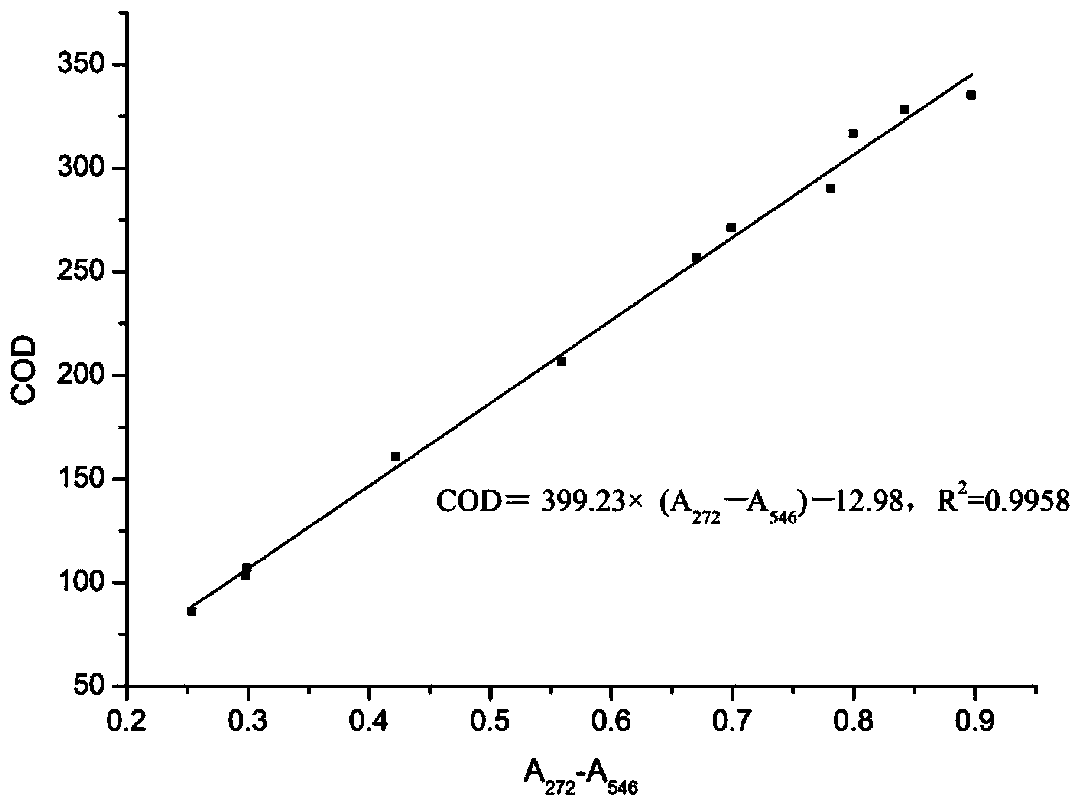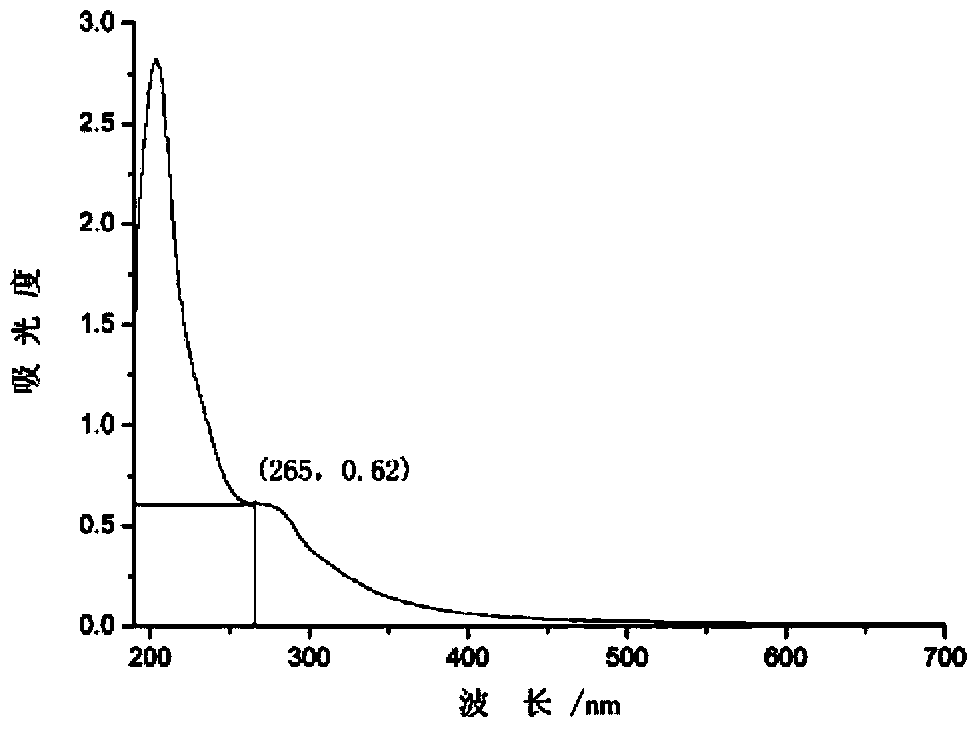Determining method of COD of paper waste water
A chemical oxygen demand and papermaking wastewater technology, applied in the measurement of color/spectral characteristics, etc., can solve problems such as affecting accuracy, and achieve the effect of avoiding secondary pollution, simple operation and high accuracy
- Summary
- Abstract
- Description
- Claims
- Application Information
AI Technical Summary
Problems solved by technology
Method used
Image
Examples
Embodiment 1
[0021] 1) Determine the UV maximum absorption wavelength of the tested papermaking wastewater
[0022] Taking the papermaking wastewater sample of a pulp mill in Guangxi as an example, the water quality analysis is shown in Table 1. The wastewater is subjected to wavelength scanning to determine the maximum absorption wavelength, see figure 1 . Depend on figure 1 It can be seen that the water sample has maximum absorption peaks at 200-220nm and 272nm bands, but the absorption peaks at 200-220nm bands are caused by the terminal absorption phenomenon of the instrument, and the peaks generated in this band cannot be used as maximum absorption peaks. Therefore, it can be determined that the maximum ultraviolet absorption wavelength of this wastewater is 272nm, and the absorbance value at this wavelength is 1.169.
[0023] Table 1 Water quality indicators of papermaking wastewater
[0024]
[0025] 2) Determine the correlation curve between absorbance and COD
[0026] Dilut...
Embodiment 2
[0029] Embodiment 2 Measurement result accuracy test
[0030] Using the method described in Example 1, 5 water samples were taken from the pulp mill at different times, diluted to different times, and the COD value was measured by HJ / T399-2007 and dual-wavelength spectrometry. The results are shown in Table 2. The measurement results of the wastewater dual-wavelength scanning method are slightly smaller than those of the standard method. This is because the COD value obtained by the dual-wavelength scanning method mainly reflects the content of reducible organic matter in the water sample, while the COD value obtained by the standard method not only includes the content of reducible organic matter. , including the content of reducible inorganic substances. Compared with the standard method, the dual-wavelength spectroscopic method has a smaller relative deviation, and the measurement error is less than ±15%.
[0031] Table 2 Comparison of dual-wavelength scanning method and C...
Embodiment 3
[0034] 1) Determine the maximum ultraviolet absorption wavelength of wastewater
[0035] Taking papermaking wastewater from a paper mill in Shandong as an example, the water quality analysis is shown in Table 3. The wastewater is subjected to wavelength scanning to determine the maximum absorption wavelength, see image 3 . Depend on image 3 It can be seen that the water sample has maximum absorption peaks at 203nm and 265nm. It is generally believed that the absorption peak at 203nm wavelength is caused by the terminal absorption phenomenon of the instrument, and the peak generated in this band cannot be used as the maximum absorption peak. Therefore, it can be determined that the maximum ultraviolet absorption wavelength of this wastewater is 265nm, and the absorbance value at this wavelength is 0.62.
[0036] Table 3 Wastewater quality indicators
[0037]
[0038] 2) Determine the correlation curve between absorbance and COD
[0039] Dilute the water sample to diff...
PUM
 Login to View More
Login to View More Abstract
Description
Claims
Application Information
 Login to View More
Login to View More - R&D Engineer
- R&D Manager
- IP Professional
- Industry Leading Data Capabilities
- Powerful AI technology
- Patent DNA Extraction
Browse by: Latest US Patents, China's latest patents, Technical Efficacy Thesaurus, Application Domain, Technology Topic, Popular Technical Reports.
© 2024 PatSnap. All rights reserved.Legal|Privacy policy|Modern Slavery Act Transparency Statement|Sitemap|About US| Contact US: help@patsnap.com










